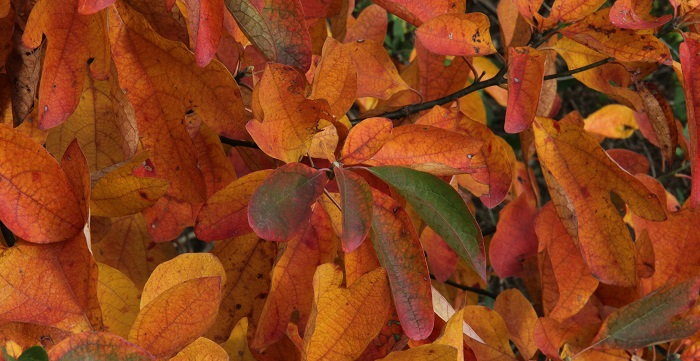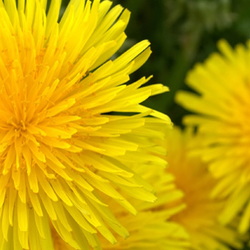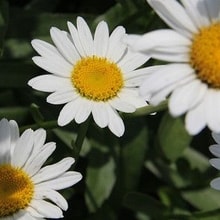(Editor's Note: This article was originally published on February 9, 2010. Your comments are welcome, but please be aware that authors of previously published articles may not be able to respond to your questions.)
It broke my heart to read a few years ago that the USFDA had declared sassafras oil as unsafe because of determinations that the safrole in the oil is a potential carcinogen. It didn't break my heart because I was concerned that all the sassafras twigs that I chewed might harm me, it broke my heart to think that I might not be allowed to chew on another one. I wondered if I would have to go into hiding.
Let me tell you about sassafras twigs. If I went into my guest closet and dug around in the little cedar chest of my childhood that's buried somewhere in its depths, I would find sassafras twigs right now. They could very easily be petrified, so long have I had them, but they are there, just in case of a sassafras emergency. You see, I collected them and chewed them like candy when I was growing up. I chewed them until my Granny Ninna told me that boys might not like girls who chewed sassafras twigs. That wouldn't really have mattered much to me, but I didn't think it would match my gorgeous teal prom dress, so I gave up sassafras twigs, but only for special occasions.
You just can't grow up in the mountains and not taste things. Green blades of grass, tiny pieces of sour grass with its yellow blossoms, dirt, poplar leaves that popped out loud when I sucked them, rocks, and sassafras twigs. My great Aunt Bett used to dig for pieces of the root, she made tea from it and drank it daily. I'd rather smell the scent of the tea than drink it, but I was never without a twig of sassafras.
I have heard that when the Spanish arrived in Florida in the early days, they mistook the fragrant sassafras for a cinnamon tree. Sassafras albidum is a native of eastern North America, and is often considered the only spice from this country. It grows in woods, along roadsides and in fields from Ontario south to Florida and Texas and as far west as Missouri. It is an aromatic deciduous tree, averaging 10 to 40 feet tall, with a rough gray bark. It has bright green alternate leaves, and they look much like green suede, but they can light the world with the flame of their colors in autumn. The leaves have one to three lobes, and the greenish yellow flowers bloom from April through June, before the leaves appear. The fruits are bluish and shaped much like peas.

The local Indians used the bark of the sassafras roots to treat fevers and rheumatism, and as a general tonic and blood purifier. Blood purifiers were those that acted as a diuretic, thus cleansing the blood of all impurities. Word of sassafras's amazing curative powers reached Europe by way of the settlers, and for a time it became a major colonial export, second only to tobacco. The Europeans soon discovered sassafras tea, and it quickly became a fashionable beverage.
An oil extracted from the tree remained in use as an antiseptic for dentistry and as a flavoring for toothpastes, root beer, and chewing gum until the early 1960's. At about that time the U.S. Food and Drug Administration declared that the chemical compound safrole, found in the oil of the bark was a potential carcinogen. I am glad my older relatives never knew that, most of them lived to be a ripe old age, drinking sassafras tea every single day of their lives.
Not so long ago, my husband's aunt, a woman in her 80's at the time, called me from Hawaii and asked if I knew where a sassafras tree grew. Well, for goodness' sakes, of course I knew where some grew, and I told her so. Very soon I was on my way to Bardstown to visit a much loved tree of my childhood. It grew in the front yard of my great grandmother's home, and spread its limbs precariously close to the roof. I don't know how old it was, but I remember when I was very small, I was chewing on its tasty twigs. I gathered some bark for my husband's Aunt Hazel, and my uncle helped me dig around to find some small sections of root. Aunt Hazel was very happy, and I had enough twigs to replenish my own stash. She was in her upper 80's at the time, so I was not too worried about it contributing to her ultimate demise.
At one time the root beer of my childhood was flavored with sassafras. No more, of course, will your root beer be the same as your mother's, because sassafras is no longer used. One of the old Adams' chewing gums had a sassafras flavoring. Thomas Adams used chicle (a rubbery tree sap from the Sapodilla trees of Mexico) flavored with sassafras and licorice, shaped it into little balls, and in 1871 he patented a gum making machine, which would flatten and cut those balls into strips which he sold to pharmacies. The pharmacists sliced a stick at a time and sold it as a product of the American Chicle Company. The company and the gums are still around today, but without the flavor of sassafras. Those of us who are as old as or older than the baby boomers know all about those root beer and gums with sassafras flavoring. We can tell you all about it.
Sassafras is no longer used as flavoring. The source of that flavor came from the roots of the sassafras tree. The leaves are still dried and used in file', a spice used in flavoring gumbo. The dried leaf products do not contain the safrole that is evident in the roots.
It still breaks my heart to think of losing that flavor, it is something that I can only tell my 5 year old grandson about. Now having told you all I know about sassafras, I think I will take a little break, open the door of my guest room closet, and take a deep breath just to inhale the scent that comes from my little cedar chest right there on the floor. Ummmm, sassafras, there's nothing like it.
Please just take my word for this one, and don't try it yourself. Twigs of sassafras don't go well with your health, nor with your prom dresses.
Sources: http://inventors.about.com/library/inventors/bladams.htm
http://en.wikipedia.org/wiki/Sassafras
http://www.botanical.com/botanical/mgmh/s/sassaf20.html
Other information is from my own experience.
Photos are from Plant Files


















